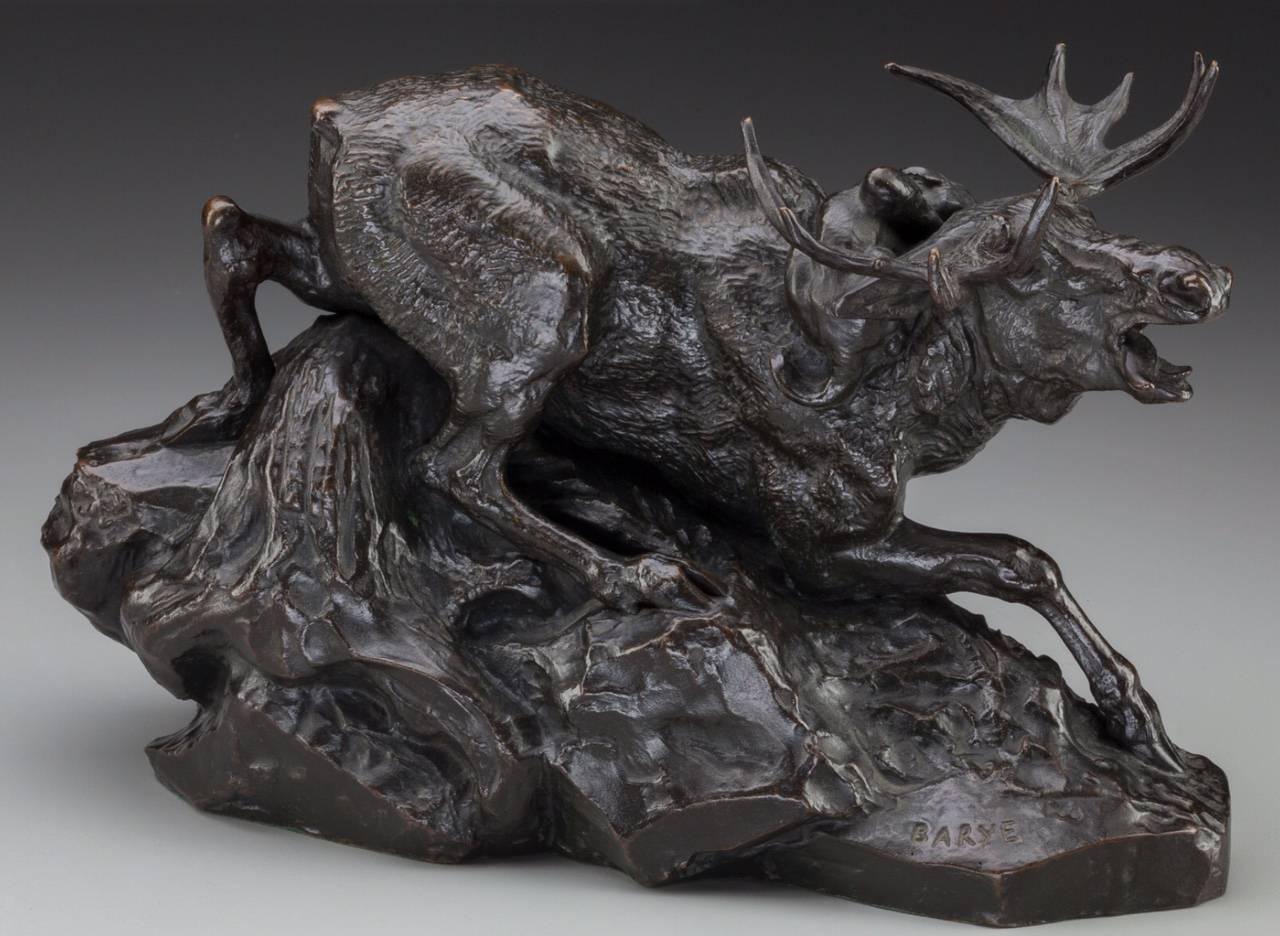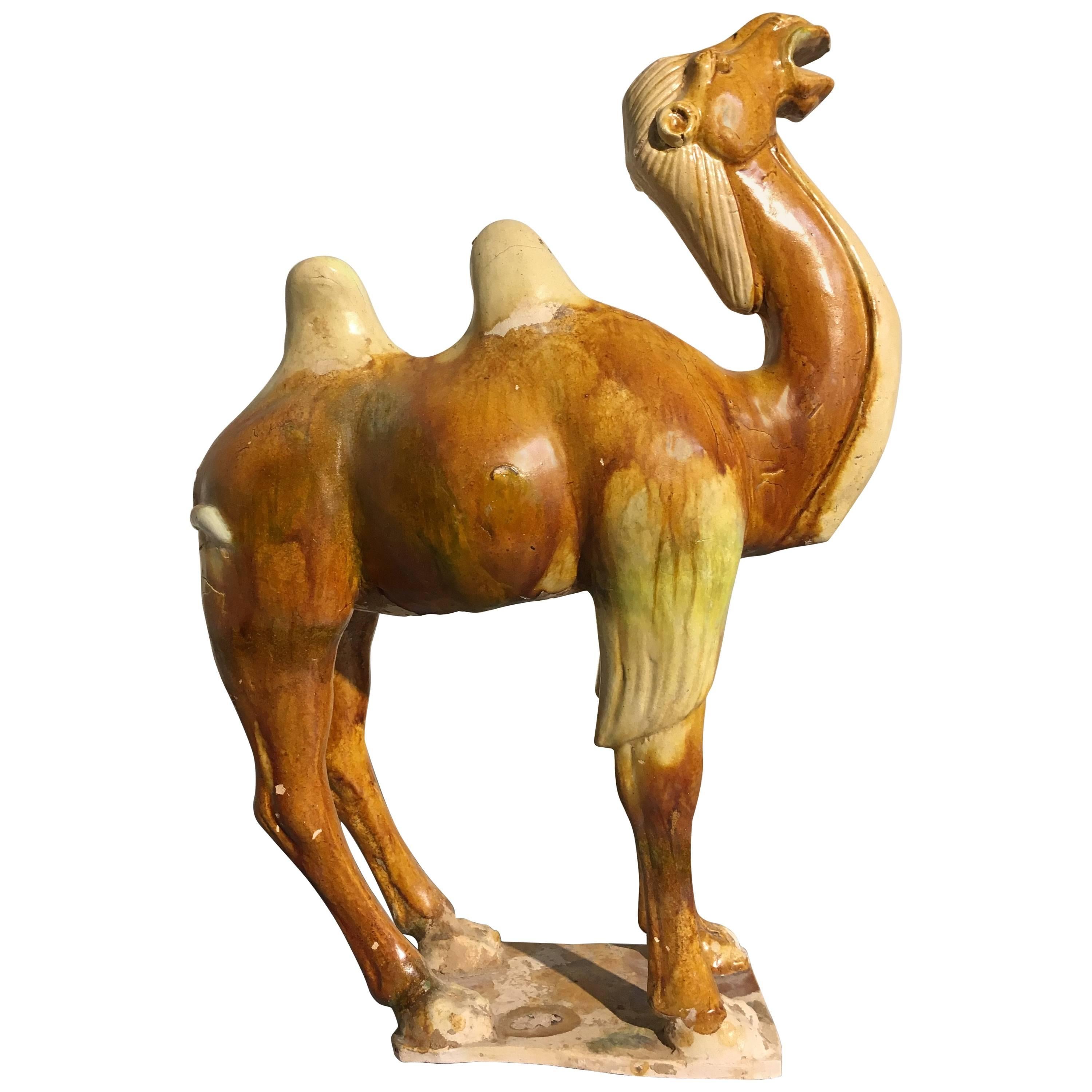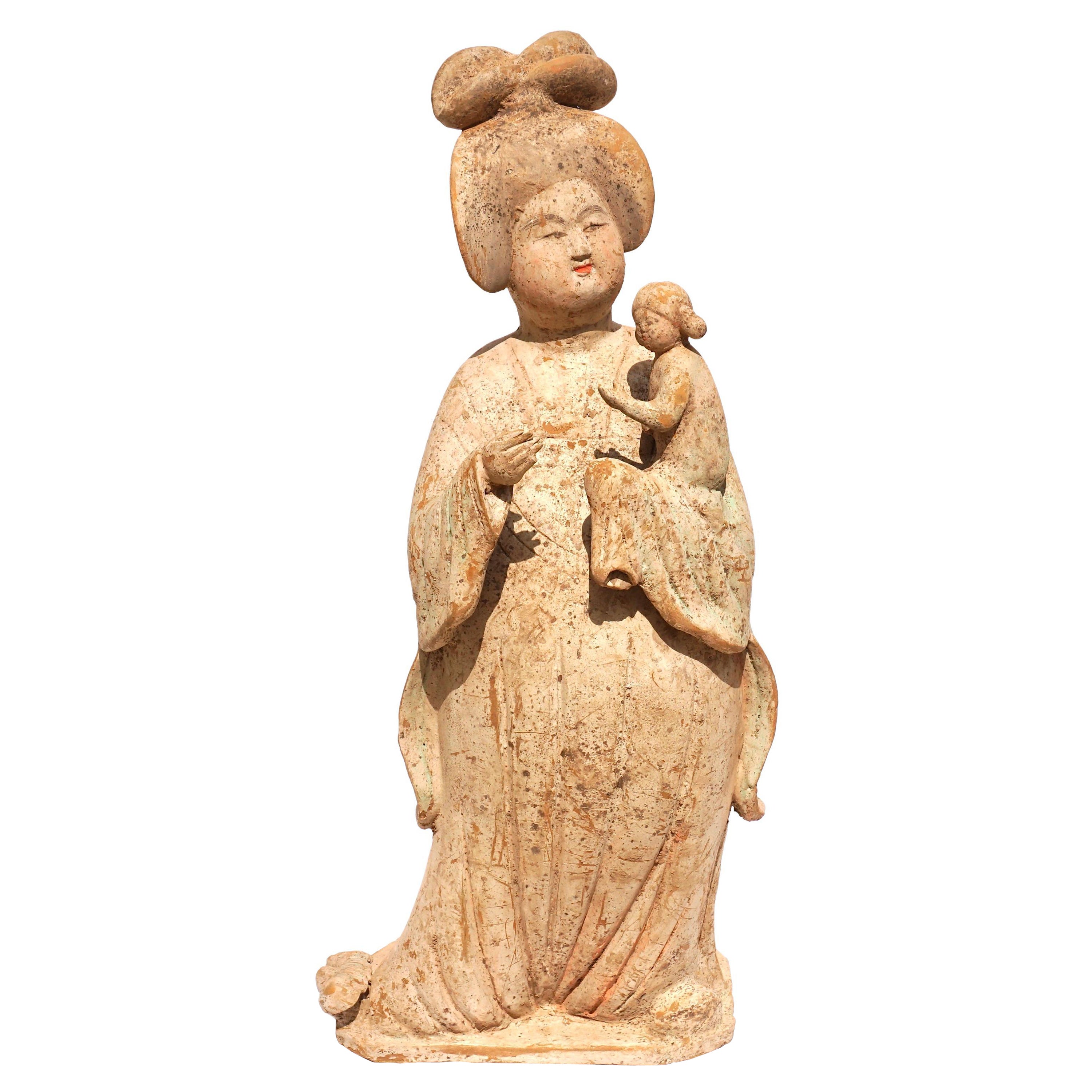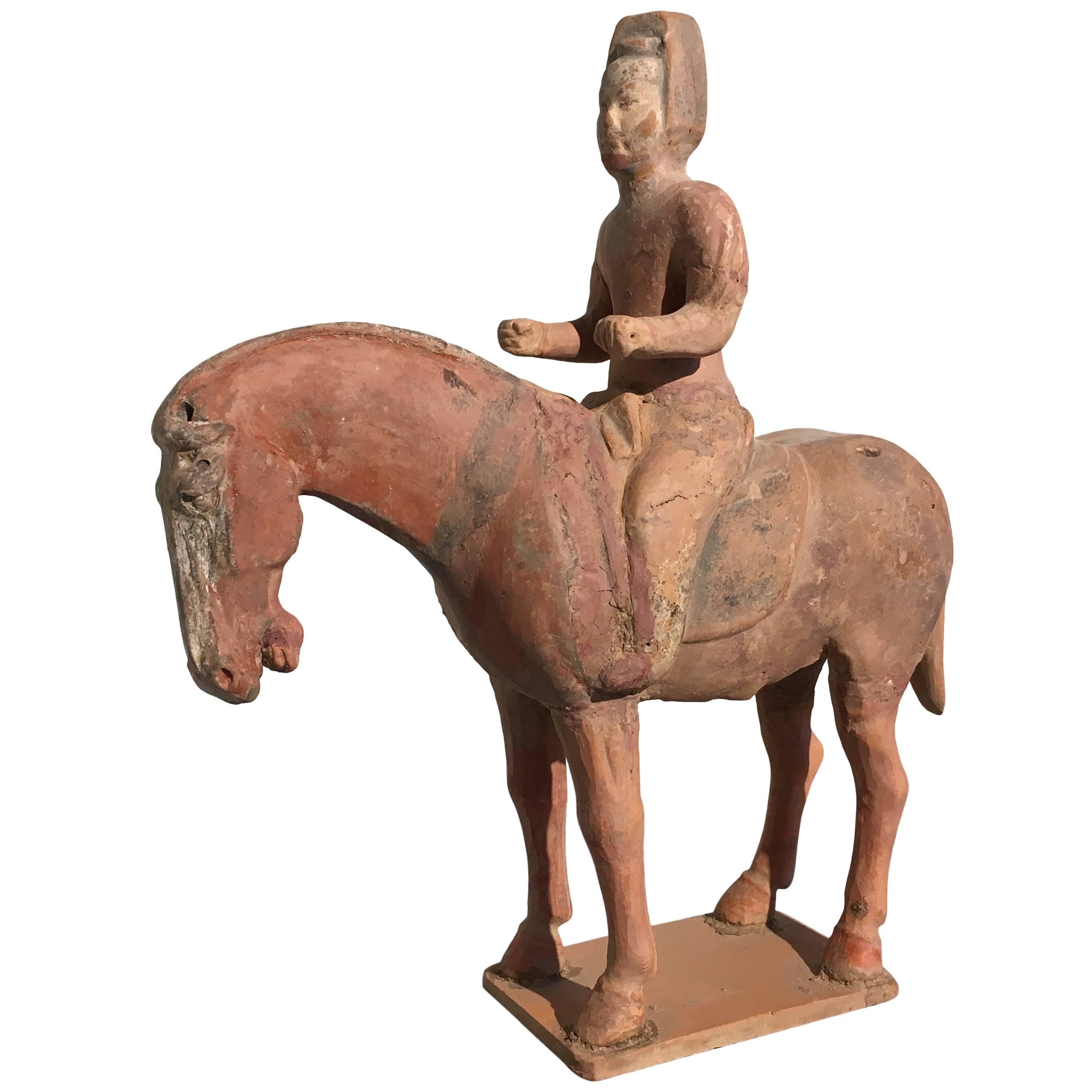Items Similar to Tang Dynasty Bactrian Camel Sculpture TL Tested
Want more images or videos?
Request additional images or videos from the seller
1 of 7
Tang Dynasty Bactrian Camel Sculpture TL Tested
About the Item
A TL Tested recumbent Bactrian camel resting on folded legs, with remnants of white polychrome slip evident, terracotta, 618 AD to 906 AD.
Measures: Height 10 inches, width 11 inches, depth 4 inches.
Condition: Excellent. No repairs detected.
Provenance: From the Private Collection of Morton & Kathleen Sachs of Louisville, Kentucky acquired from TK Asian Antiquities (Williamsburg, VA) in 2000.
AVANTIQUES is dedicated to providing an exclusive curated collection of Fine Arts, Paintings, Bronzes, Asian treasures, Art Glass and Antiques. Our inventory represents time-tested investment quality items with everlasting decorative beauty. We look forward to your business and appreciate any reasonable offers. All of our curated items are vetted and guaranteed authentic and as described. Avantiques only deals in original antiques and never reproductions. We stand behind our treasures with a full money back return if the items are not as described.
It was during the Tang Dynasty that China’s outstanding technological and aesthetic achievements opened to external influences, resulting in the introduction of numerous new forms of self-expression, coupled with internal innovation and considerable social freedom. The T’ang dynasty also saw the birth of the printed novel, significant musical and theatrical heritage and many of China’s best-known painters and artists. The Dynasty was created on the 18th of June, 618 AD, when the Li family seized power from the last crumbling remnants of the preceding Sui Dynasty. This political and regal regime was long-lived, and lasted for almost 300 years. The imperial aspirations of the preceding periods and early Tang leaders led to unprecedented wealth, resulting in considerable socioeconomic stability, the development of trade networks and vast urbanisation for China’s exploding population (estimated at around 50 million people in the 8th century AD). The Tang rulers took cues from earlier periods, maintaining many of their administrative structures and systems intact. Even when dynastic and governmental institutions withdrew from management of the Empire towards the end of the period – their authority undermined by localised rebellions and regional governors known as jiedushi –the systems were so well- established that they continued to operate regardless.
The artworks created during this era are among China’s greatest cultural achievements. It was the greatest age for Chinese poetry and painting, and sculpture also developed (although there was a notable decline in Buddhist sculptures following repression of the faith by pro-Taoism administrations later in the regime). It is disarming to note that the eventual decline of imperial power, followed by the official end of the dynasty on the 4th of June 907, hardly affected the great artistic turnover.
During the Tang Dynasty, restrictions were placed on the number of objects that could be included in tombs, an amount determined by an individual’s social rank. In spite of the limitations, a striking variety of tomb furnishings – known as mingqi – have been excavated. Entire retinues of ceramic figures – representing warriors, animals, entertainers, musicians, guardians and every other necessary category of assistant – were buried with the dead in order to provide for the afterlife. Warriors (lokapala) were put in place to defend the dead, with domestic servants and attendants, and officials to run his estate in the hereafter. Charming examples of animals such as the current piece are perhaps the most amusing and aesthetically-pleasing of the mingqi, however. This attractive sculpture is an eloquent reminder of China’s outstanding heritage, and a beautiful addition to any serious Chinese collection.
Please also consider Avantique’s antique and ancient Asian Art Collection of Han Dynasty, Tang Dynasty, Ming Dynasty, Qing, and Republic period items to complete your home and office decorations with class. Avantiques has Asian pottery, terra cotta, bronze, and paintings to complement your collection. We strive to collect the highest quality Asian antiquities in exceptional condition.
- Dimensions:Height: 10 in (25.4 cm)Width: 11 in (27.94 cm)Depth: 4 in (10.16 cm)
- Style:Tang (Of the Period)
- Materials and Techniques:
- Place of Origin:
- Period:
- Date of Manufacture:700
- Condition:Wear consistent with age and use.
- Seller Location:Dallas, TX
- Reference Number:1stDibs: LU1774217857321

About the Seller
4.9
Gold Seller
These expertly vetted sellers are highly rated and consistently exceed customer expectations.
Established in 2000
1stDibs seller since 2015
405 sales on 1stDibs
Typical response time: 2 hours
- ShippingRetrieving quote...Ships From: Dallas , TX
- Return PolicyA return for this item may be initiated within 7 days of delivery.
More From This SellerView All
- Tang Dynasty Painted Pottery Dancer TL TestedLocated in Dallas, TXChinese Tang Dynasty painted pottery dancer TL Tested. Ca. 618-907 AD A delicate female dancer wearing a long flowing gown with draped, winged sleeves. The...Category
Antique 15th Century and Earlier Chinese Tang Figurative Sculptures
MaterialsPottery
- Tang Dynasty Sancai Glazed Pottery Horse TL TestedBy Tang DynastyLocated in Dallas, TXTang Dynasty (618 - 907) Sancai glazed pottery horse TL Tested The cream-glazed horse is naturalistically modelled standing on a rectangular base, with the mane, tail and hooves highlighted in amber glaze. The head is gracefully curved to the left, with a green and amber glazed saddle and blanket and foliate-shaped plaques detailed with moulded toads suspending from the trappings. Measures: Height: 14.24 Inches (36.2 cm) Width: 15.5 Inches (39.35 cm) Depth: 6 Inches (15.2 cm) Provenance: An English private collection, acquired in Hong Kong in the 1980s A Certificate of Authenticity will accompany this item along with a lucite base. Condition; Excellent with one repair to right side saddle blanket. Some remaining frustrations throughout with areas of oxidation and a fine craquelure throughout. A formidable piece that presents beautifully. Notes: The present sancai horse...Category
Antique 15th Century and Earlier Chinese Tang Animal Sculptures
MaterialsPottery
- Tang Dynasty Museum Fat Lady and Child TL TestedLocated in Dallas, TXTang Dynasty polychromed fat lady with child in arm. TL Tested Terracotta, pottery with traces of orange and green paint Sui to Tang Dynasty (581-618) Measures: Height: 20.2 inches (51cm) Width: 9.45 inches (24cm) Guaranteed Authentic with corresponding TL Thermoluminescence Test conducted by Artemis Testing Lab Included in the sale of this item. Condition: Excellent with loss to pinky and wear commensurate of age. This rare and outstanding ceramic court attendant was made during what many consider to be China’s Golden Age, the T’ang Dynasty. It was at this point that China’s outstanding technological and aesthetic achievements opened to external influences, resulting in the introduction of numerous new forms of self-expression, coupled with internal innovation and considerable social freedom. The T’ang dynasty also saw the birth of the printed novel, significant musical and theatrical heritage and many of China’s best-known painters and artists. The T’ang Dynasty took control in 618 AD, when the Li family seized power from the last crumbling remnants of the preceding Sui Dynasty. This political and regal regime was long-lived, and lasted for almost 300 years. The imperial aspirations of the preceding periods and early T’ang leaders led to unprecedented wealth, resulting in considerable socioeconomic stability, the development of trade networks and vast urbanisation for China’s exploding population (estimated at around 50 million people in the 8th century AD). The T’ang rulers took cues from earlier periods, maintaining many of their administrative structures and systems intact. Even when dynastic and governmental institutions withdrew from management of the empire towards the end of the period – their authority undermined by localised rebellions and regional governors known as jiedushi –the systems were so well-established that they continued to operate regardless. The artworks created during this era are among China’s greatest cultural achievements. It was the greatest age for Chinese poetry...Category
Antique 15th Century and Earlier Chinese Tang Figurative Sculptures
MaterialsTerracotta
- Tang Dynasty Large And Important Pottery Horse TL TestedLocated in Dallas, TXLarge And Important Tang Dynasty (618-907AD) Pottery Horse TL Tested. China. Ca. 618-907 AD A beautiful pottery figure of a horse. The animal is shown in a...Category
Antique 15th Century and Earlier Tang Animal Sculptures
MaterialsPottery
- Tang Dynasty Museum Quality TL Tested Terracotta Fat Lady FigureLocated in Dallas, TXTang Dynasty painted terracotta fat lady tomb figure China. Tang Dynasty Circa 618-907 Modelled in the form of a classically dressed fat lady, this terraco...Category
Antique 15th Century and Earlier Chinese Tang Figurative Sculptures
MaterialsTerracotta
- Tang Dynasty Full Set Of Painted Pottery Zodiac Figures TL testedLocated in Dallas, TXTang Dynasty Full Set Of Painted Pottery Zodiac Figures (TL tested) The Thermoluminescence Report (Item #185404) will accompany this sale. A Rare Set of Chinese Pottery Zodiac Figu...Category
Antique 15th Century and Earlier Chinese Tang Figurative Sculptures
MaterialsPottery
You May Also Like
- Tang Dynasty Sancai Glazed Pottery Camel, TL TestedLocated in Austin, TXAn evocative Chinese Tang dynasty (618 to 906 AD) sancai glazed pottery model of a braying camel. The camel is well modeled, standing foursquare upon a rectangular plinth, neck raised, head thrown back, and mouth open in either a defiant, or triumphant, bray. Although sancai means "three color", this particular camel is glazed with only two colors - mostly in amber, with patches of straw glaze mimicking the large patches of fur along the camel's legs, humps, head and neck. TL tested...Category
Antique 15th Century and Earlier Chinese Tang Antiquities
MaterialsPottery
- Tang Dynasty Painted Pottery Horse and Rider, TL TestedLocated in Austin, TXA charming Tang dynasty painted pottery figure of a horse and mounted noble rider. TL tested by Oxford Authentication. The horse portrayed standing fours...Category
Antique 15th Century and Earlier Chinese Tang Antiquities
MaterialsEarthenware
- Fine Tang Dynasty Pottery Statue of Guardian, TL TestedLocated in Greenwich, CTA very refined, unusual and important lively modeled pottery statue of guardian, dramatic and powerful pose, early Tang dynasty, 618-907AD, comes with Oxford authentication TL test...Category
Antique 15th Century and Earlier Chinese Tang Sculptures and Carvings
MaterialsTerracotta
- Chinese Tang Dynasty-Style Bactrian Camel Terra Cotta Tomb FigureLocated in New York, NYAntique Chinese Tang Dynasty-style terra cotta tomb figure of a Bactrian camel, the main form of transport over the Silk Road, with its head tilted back and mouth open to the sky, we...Category
20th Century Chinese Export Figurative Sculptures
MaterialsTerracotta
- Unusual Tang Dynasty Persian Horse Rider Statue, Silk Road Trader, TL TestedLocated in Greenwich, CTA fine and unusual statue of standing horse with a Persian rider. Tang Dynasty (618-907 AD) Silk Road trader from Persia, comes with Oxford authenticati...Category
Antique 15th Century and Earlier Chinese Tang Sculptures and Carvings
MaterialsTerracotta
- Large Early Tang Dynasty Painted Pottery Model of a Prancing Horse, TL TestedLocated in Austin, TXA magnificent and large early Tang dynasty (618-906 AD) model of a prancing or dancing horse, circa 7th century. The majestic animal is caught mid-motion, one leg raised, head grace...Category
Antique 15th Century and Earlier Chinese Tang Antiquities
MaterialsPottery
Recently Viewed
View AllMore Ways To Browse
Antique Stand For Sculpture
Artist Sculpture Stand
Antique Camel
Reproduction Sculpture
Camel Back
Camel Decorative
White Camel
Reproduction Bronze Sculpture
Late Ming Dynasty
Tanger Painting
Animal Camel
Money China
Chinese Furniture Musicians
Antique Bronze Animal Figures
Antique Chinese Animal Sculptures
Chinese Ceramic Animals
Qing Dynasty Painting
Antique Bronze Sculptures China





